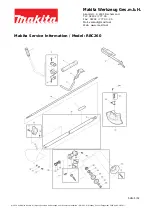
R o o m
c o r r e c t i o n
3 0
initial short test sequence, designed to check that the microphone
is set up correctly, a series of test signals are presented to each
loudspeaker and measured at the microphone to determine how
the room response affects the sound from each speaker. This phase
of the procedure takes about one minute per speaker, and can be
left to run unattended.
Finally after a complete set of measurements has been made
for each channel and speaker layout, the program calculates a
set of filters for each channel, and stores these to the digital
surround controller. A copy of the measurements, together with the
calculated filters in each profile, is also stored on the PC so they
can be accessed at a later date if required. All the room correction
settings and measurements will be saved in a folder named after
the MSL file. For example if your MSL file is called G68_theatre.msl
then all of the room correction settings and measurements will be
in a folder called G68_theatre.mrd.
Examples
Most domestic rooms tend to be rectangular, or at the very least
have one pair of parallel facing walls, and unfortunately these are
the ideal conditions for low frequency resonances within the room.
The wavelength of low frequency sounds is relatively large, so even
bookcases and curtains act as an almost perfect mirror for low
frequencies.
Frequencies close to the resonant frequency, determined by the
distance between the two reflective surfaces, will sound louder and
take longer to decay than other frequencies. In practice this means
that when listening to music some notes will sound louder, giving a
roughness or unevenness to the sound.
Other problems that can be corrected by room correction are
imbalances between the speakers due to positioning constraints.
For example, in an L-shaped room one loudspeaker may need to be
close to the wall whereas its partner is in an open area, giving rise
to an imbalanced sound field.
Unless your listening room has been specially designed for acoustic
performance, you will almost certainly hear distinct benefits after
incorporating room correction into your digital surround controller,
and if the room has major resonances or imbalances the difference
should be quite dramatic.
You can find more information about the theory behind Meridian
Room Correction on the Meridian Web Site at:
http://www.meridian-audio.com/p_rc.htm
Summary of Contents for Configuration Program
Page 1: ...Meridian Configuration Program Guide...
Page 4: ...C o n t e n t s i v...
















































